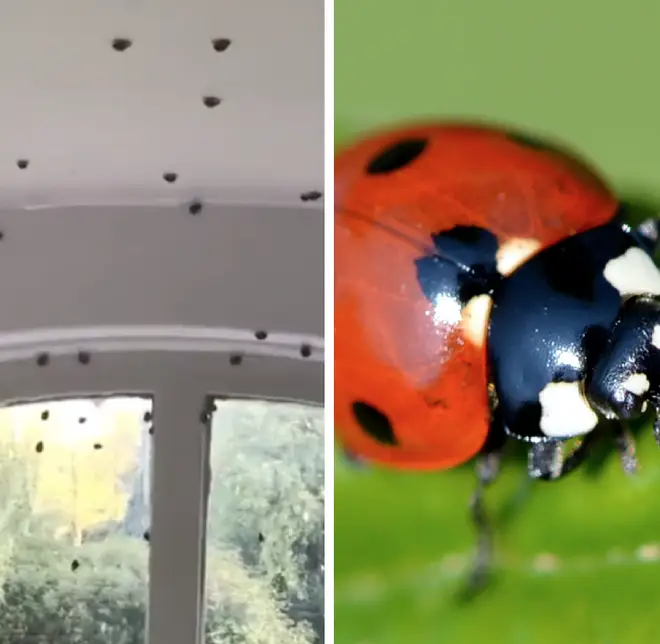
Ali Miraj 6pm - 9pm
11 October 2018, 15:15
Social media has been awash with people across the country sharing photos and videos of their homes being swarmed by ladybirds.
The bugs, known as the Harlequin ladybird, have been boosted in numbers thanks to Britain’s record-breaking summer.
Now temperatures are starting to cool, the invasive creatures are seeking a place to hibernate - which includes homes.

GB Olympian Kelly Sotherton shared a video of hundreds of Harlequins scurrying around her window and across the ceiling.
She tweeted: “Get home and welcomed by Swarms by ladybirds In every window #ladybirdinvasion”.
Ms Sotherton is one of many posting their encounters with the species on social media.
Native to Asia, the insect was first spotted in the UK 14 years ago.
It is now the second most common ladybird species.

The Harlequin is often bigger than the common two-spot ladybird, but there are concerns it is displacing native species.
They are not harmful to humans but experts are advising people to keep their windows closed.
Professor Peter Brown said if you spot a number of ladybirds in your home, the chances are it’s the Harlequin.
He told the BBC that they can leave a yellow substance if they’re disturbed, which can stain your furniture.
#Ladybirds......everywhere🐞🐞🐞 pic.twitter.com/GimNwA3BIj
— Judy Dean (@JudyDean1) October 5, 2018
Some media outlets have described the ladybird as “STD-riddled”.
This comes from a fungal disease they carry called Laboulbeniales.
It’s passed on when the bugs come into close contact with each other, especially during mating.
Scientist say it is possible the disease affects the insect’s lifespan or the number of eggs a female can produce.
The good news is that it can’t be passed onto humans.